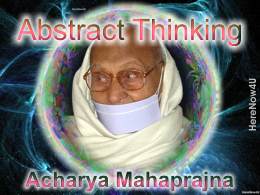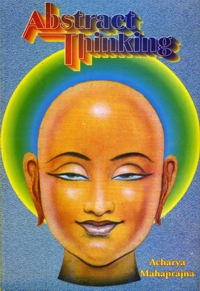
Dhyana (Meditation) means preksha, i.e., perceiving, seeing.
Preksha is followed by anupreksha.i.e., thinking or contemplation on subject which free the mind of its infatuation.
Repeated thinking on a subject or idea influences the mind.
Such thinking or practice is called bhavana.
The man, who practises bhavana, becomes capable of meditation.
The practice of four bhavanas is necessary for the development of meditational capacity.
- Knowledge-oriented bhavana:
The practice of knowing things objectively and impartially without attachment, aversion and delusion.
- Perception-oriented bhavana:
The practice of seeing things objectively and impartially without attachment, aversion and delsion.
- Conduct-oriented bhavana:
The practice of acting objectively and impartially without attachment, aversion and delusion.
- Detachment-oriented bhavana:
The practice of non-attachment, non-aspiration and fearlessness
The object after which a man aspires, the practice, which he repeats so often, conditions his mind. This is the process of self-hypnosis. It can be also called 'japa' (constant reiteration of a spell or the name of a deity). One, who constantly aspires after and contemplates on the soul, gets established in the soul. That is the quintessence of the repeated iteration of 'soham' ('I am the Supreme Soul' - the basic maxim of the Vedanta Philosophy). He who constantly practises the recitation of 'arham' ('I am the Jin, the Buddha or the Shiva') sets in motion the process of becoming 'the Jin or the Buddha or the Shiva'. One person may be inspired by devotion, another by chaste conduct, still another by good fellowship. Different people are permeated by various kinds of aspirations. Anyone who derives inspiration from any good action is led by that inspiration towards his goal.
During the course of spiritual practice, meditation should be followed by self-study and self-study should be followed again by meditation. The term, 'self-study', subsumes japa, bhavana, and anupreksha. All these should be practised, depending upon time and one's capacity in "Dhyana-Shatak". It is said in "Dhyan-Shatak" that at the conclusion of each meditational-session, one should practise anupreksha, such as the anupreksha of the transitoriness of life, etc. in order to keep the mind detached from various experiences during meditation, the practice of anupreksha is very important.
After religious meditation, four anupreksha are generally practised:
- Anupreksha of solitariness
- Anupreksha of the transitoriness of life
- Anupreksha of helplessness
- Anupreksha of cycle of birth and death.
 Acharya Mahaprajna
Acharya Mahaprajna

